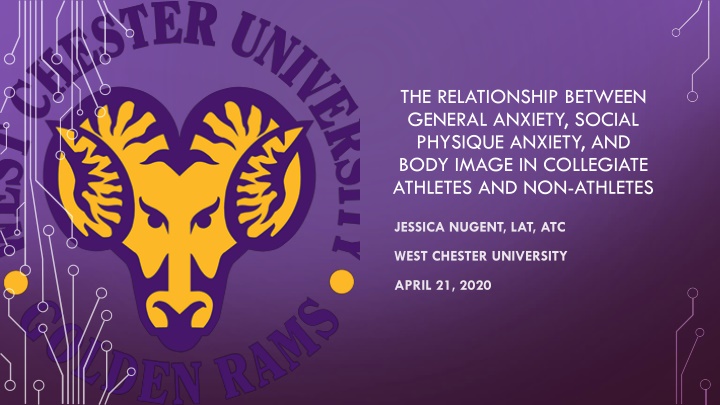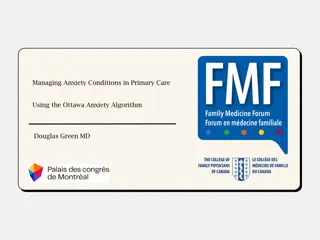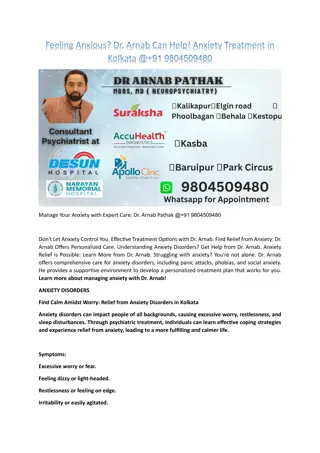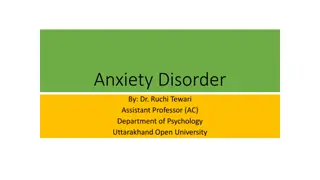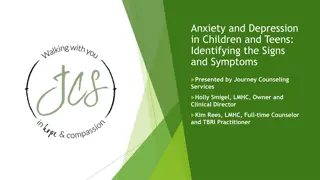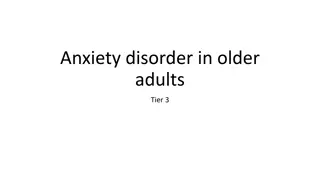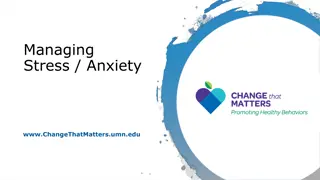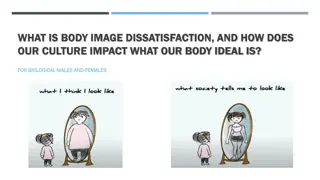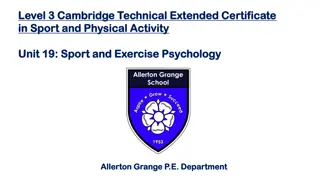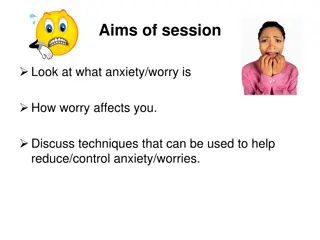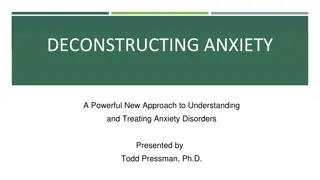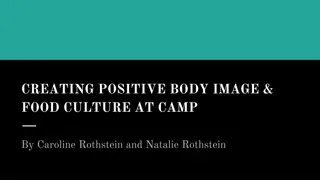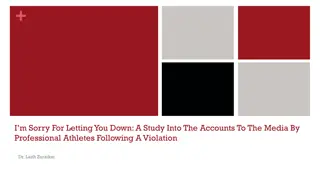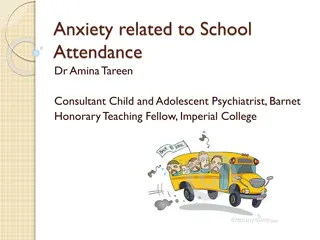Relationship Between Anxiety and Body Image in Athletes
This study examines the correlation between anxiety levels, including general and social physique anxiety, and body image satisfaction among collegiate athletes and non-athletes. It delves into the nuances of these psychological factors and their impact on male and female individuals in sports settings. Explore the interconnectedness of anxiety and body image perception in athletes to enhance understanding and support strategies for mental well-being.
Download Presentation

Please find below an Image/Link to download the presentation.
The content on the website is provided AS IS for your information and personal use only. It may not be sold, licensed, or shared on other websites without obtaining consent from the author.If you encounter any issues during the download, it is possible that the publisher has removed the file from their server.
You are allowed to download the files provided on this website for personal or commercial use, subject to the condition that they are used lawfully. All files are the property of their respective owners.
The content on the website is provided AS IS for your information and personal use only. It may not be sold, licensed, or shared on other websites without obtaining consent from the author.
E N D
Presentation Transcript
THE RELATIONSHIP BETWEEN GENERAL ANXIETY, SOCIAL PHYSIQUE ANXIETY, AND BODY IMAGE IN COLLEGIATE ATHLETES AND NON-ATHLETES JESSICA NUGENT, LAT, ATC WEST CHESTER UNIVERSITY APRIL 21, 2020
1 in 4 experience MH problem (McMcanus, Meltzer, Brugha, Bebbington, & Jenkins, 2009). MENTAL HEALTH 322 million depression 264 million anxiety WHO 2015 Depression #1 & Anxiety #6 Global Disability (WHO, 2017)
The fear of ones physique being negatively evaluated by others (Hart, Leary, & Rejeski 1989) Subtype of anxiety (Hart, Leary, & Rejeski 1989) SOCIAL PHYSIQUE ANXIETY (SPA) *Another s evaluation, not our own* (Hart, Leary, Rejeski, 1989) Self-presentation theory Can t control social anxiety Athlete vs non-athletes Same definition Different factors
an individuals perception of his or her own body (Schilder, 1935) Body image can change depending on setting (Krane, Waldron, Michalenok, Stiles-Shipley, 2001) Athletes two ideal body images (Krane, Waldron, Michalenok, Stiles-Shipley, 2001) BODY IMAGE (BI) Body image = social construct Athletes more aware of BI in uniform increased body dissatisfaction (Greenleaf, 2002)
Fill the gap SIGNIFICANCE OF THE STUDY Understand the relationship of the factors examined Clinicians understand athletes to better help them.
1. What is the relationship between social physique anxiety, general anxiety, and body image satisfaction in male and female athletes and non-athletes? RESEARCH QUESTIONS 2. Is there a difference in social physique anxiety, general anxiety, and body image satisfaction between male and female athletes and non-athletes?
3. What is the relationship between general anxiety, social physique anxiety, weight pressures in sport, and body image satisfaction in male and female athletes? RESEARCH QUESTIONS 4. Is there a difference in weight pressures in sport between male and female athletes?
1. There will be a relationship between social physique anxiety, general anxiety, and body image satisfaction in male and female athletes and non-athletes. HYPOTHESES 2. There will be a difference in social physique anxiety, general anxiety, and body image satisfaction between male and female athletes and non-athletes
3. There will be a relationship between weight pressures in sport and body image satisfaction, social physique anxiety, and general anxiety in male and female athletes. HYPOTHESES 4. Female athletes will report more weight pressures in sport compared to male athletes.
About 550 student-athletes One DII institution 2019-2020 academic year PARTICIPANTS About 300 non-athletes FYE undergraduate course Control group
No Consent Form Thank you! Yes 18+ Yes PROCEDURES Demographics WPS (M or F) GAD-7 SPAS MBSRQ-AE GAD-7 SPAS MBSRQ-AE
DATA ANALYSIS Question 1: relationship between general anxiety, social physique anxiety, and BI satisfaction Pearson Correlation Test Question 2: differences in general anxiety, social physique anxiety, and BI satisfaction ANOVA for each of the 3 variables Question 3: relationship between weight pressures, body image satisfaction, SPA, and general anxiety Pearson Correlation Test between mean WPS, GAD-7, SPA, and MBSRQ-AE scores in athletes Question 4: differences in weight pressure in sport between M & F athletes Mann-Whitney U Test to compare mean WPS scores
RESULTS A negative, significant relationship was found between social physique anxiety and body image satisfaction. As body image satisfaction increased, social physique anxiety decreased.
CONCLUSION The findings in this study align with the hypotheses made by the researchers. The findings in this study may also give medical professionals in the fields of sports medicine and sport psychology a better understanding of the relationship between these constructs.
Greenleaf, C. (2004). Weight Pressures and Social Physique Anxiety Among Collegiate Synchronized Skaters. Journal of Sport Behavior, 27(3), 260 276. Hart, E. A., Leary, M. R., & Rejeski, W. J. (1989). THE MEASUREMENT OF SOCIAL PHYSIQUE ANXIETY. Journal of Sport & Exercise Psychology, 11(1), 94-104. Krane, V., Waldron, J., Michalenok, J., & Stiles-Shipley, J. (2001). Body image concerns in female exercisers and athletes: A feminist cultural studies perspective. Women in Sport and Physical Activity Journal, 10, 17-54. McManus, S., Meltzer, H., Brugha, T.S., Bebbington, P.E., & Jenkins, R. (2009). Adult psychiatric morbidity in England, 2007: Results of a household survey. The NHS Information Centre for health and social care. Retrieved from https://digital.nhs.uk/ data-and- information/publications/statistical/adult-psychiatric-morbidity-survey/adultpsychiatric- morbidity-in-england-2007-results-of-a-household-survey REFERENCES Schilder, P. (1935). The image and appearance of the human body. New York: International Universities Press. World Health Organization. (2017). Depression and other common mental disorders: Global health estimates. Retrieved from http://apps.who.int/iris/bitstream/10665/ 254610/1/WHO-MSD-MER-2017.2-eng.pdf
